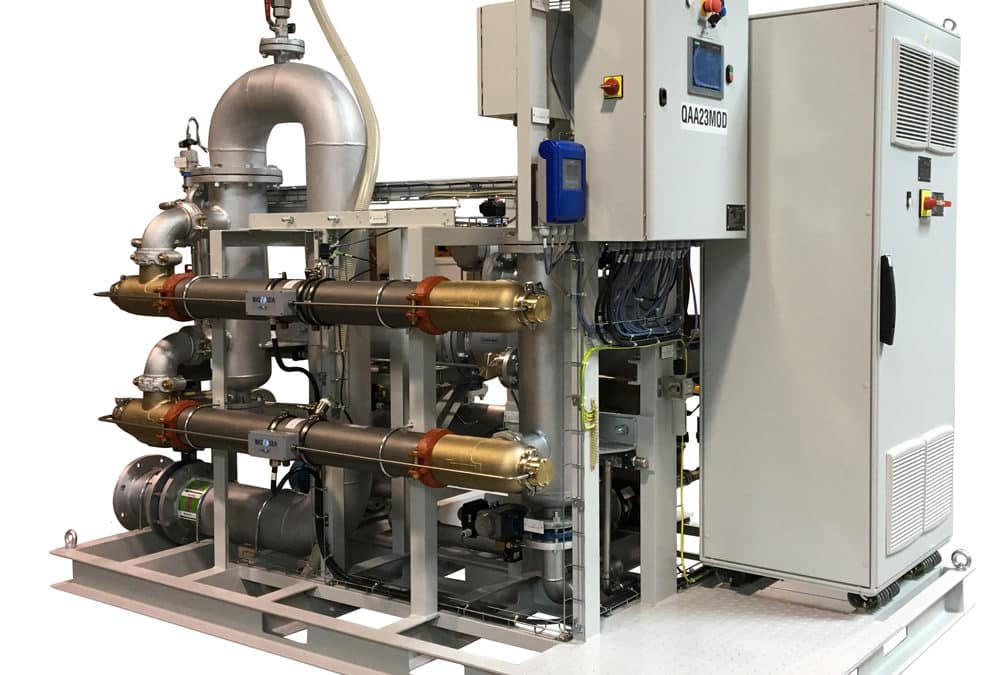BIO-UV Group has completed successfully the testing of an enhanced BIO-SEA ballast water treatment system designed to reduce further the time in which treated water has to be held onboard prior to discharge overboard.
Holding time is the minimum period between the uptake and discharge of ballast water to ensure it has been properly treated.
The technical advancement BIO-UV Group has made in UV-C technology, however, has shown that holding time can be reduced also in brackish water open seas.
Xavier Deval, Business Director, BIO-SEA, said: “Successful testing has verified the technical improvements to the BIO-SEA ballast water treatment system by cutting minimum holding time down to zero hours for fresh water, 20 hours for brackish water, 24 hours for marine water, at flowrate.
“This is by far the lowest hold time on the market for UV-based BWTS and allows for easier and faster operations for shipowners trading in all different water types.”
While the development means BIO-SEA has the lowest holding time for any UV-based BWTS currently on the market, tests have indicated the potential for zero holding in all waters.
The testing protocol for UV systems requires a holding time between treatments at water uptake and discharge to ensure that microorganisms are fully inactivated. “A ballast water technology certified to reduce holding time provides unequivocal proof of efficiency,” said Deval.
Based on more than 20 years’ experience in UV-based water treatment, BIO-UV Group’s cutting-edge technology has achieved outstanding results: the shortest ballast water holding time without impacting treatment rate capacity (TRC) at full flow. This, with only one unit and from the same design and technology introduced to the market eight years ago.
“The first design was the right one, which demonstrates the in-house know-how of BIO-UV Group’s engineers,” said Benoît Gillmann, BIO-UV Group’s President and CEO.
Shipowners with short sea shipping routes are directly affected by holding times in their operations, hence BIO-UV Group’s focus to optimise BIO-SEA to reduce this important operating parameter. Treatment technologies that have not been certified for reduced holding time can delay ship operations, costing shipowners dearly
“This is of great importance for ships sailing in US waters, especially in the Great Lakes where the time between ballasting and de ballasting is short and where ship-owners always ask for greater operational flexibility. But it will also be true everywhere else in the world with the coming new G8 requirements from 2020,” added Gillmann.
BIO-UV Group has achieved favourable holding time reductions by optimising the UV dosage rate. UV lamps operate with two treatment levels, one to deliver enough power to treat ballast water according to IMO/MPN requirements (30-2000m3/h) another to power up the lamps for USCG/CMFDA standards (55-1400m3/h).
To date, about 150 vessels have been installed with the BIO-SEA system. In addition to CMA CGM other shipowners that favour the company’s technology include Louis Dreyfus Armateurs, Damen Green, MSC Cruises, Royal Caribbean Cruise International and CGGVeritas, amongst others.

